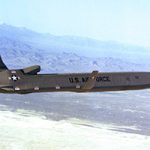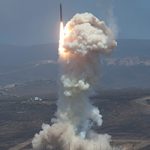Ballistic missiles are powered initially by a rocket or series of rockets in stages, but then follow an unpowered trajectory that arches upwards before descending to reach its intended target. Ballistic missiles can carry either nuclear or conventional warheads. There are four general classifications of ballistic missiles based on their range, or the maximum distance […]
Fact Sheet: An Introduction to Ballistic Missile Defense
Click here for a printable PDF version. The U.S. has developed and deployed a number of systems in an attempt to defend the U.S. homeland, troops and facilities abroad, and allies against ballistic missile attacks. The Ground-based Midcourse Defense (GMD) System, originally referred to as “National Missile Defense”, is intended for defense of the U.S. […]
Philip E. Coyle and James McKeon’s Op-Ed in U.S. News and World Report
Read the full piece here. Many years have passed since the United States last held serious negotiations with North Korea. During this time, North Korea has tested and built numerous missiles and nuclear weapons, conducting five nuclear tests since 2006. Still, North Korea does not yet have a working long-range missile that can reach the […]
Senior Science Fellow Philip Coyle Quoted in Korea Expose
Read the full piece here. Philip Coyle, Senior Science Fellow at the Center for Arms Control and Non-proliferation, concurred. “After a very poor record with six test failures in a row in the 1990s, THAAD has successfully intercepted its targets in 11 out of 11 tests since 2006, but these tests are highly scripted to […]
Senior Science Fellow Philip Coyle and Scoville Fellow Bernadette Stadler’s op-ed in The Hill
Read the full op-ed here. Terminal High Altitude Area Defense (THAAD), the ballistic missile defense system that the United States recently began constructing in South Korea, is intended to protect the South from North Korean aggression. Instead, it is likely that the system will antagonize China — whose cooperation will be necessary to defuse tensions […]


